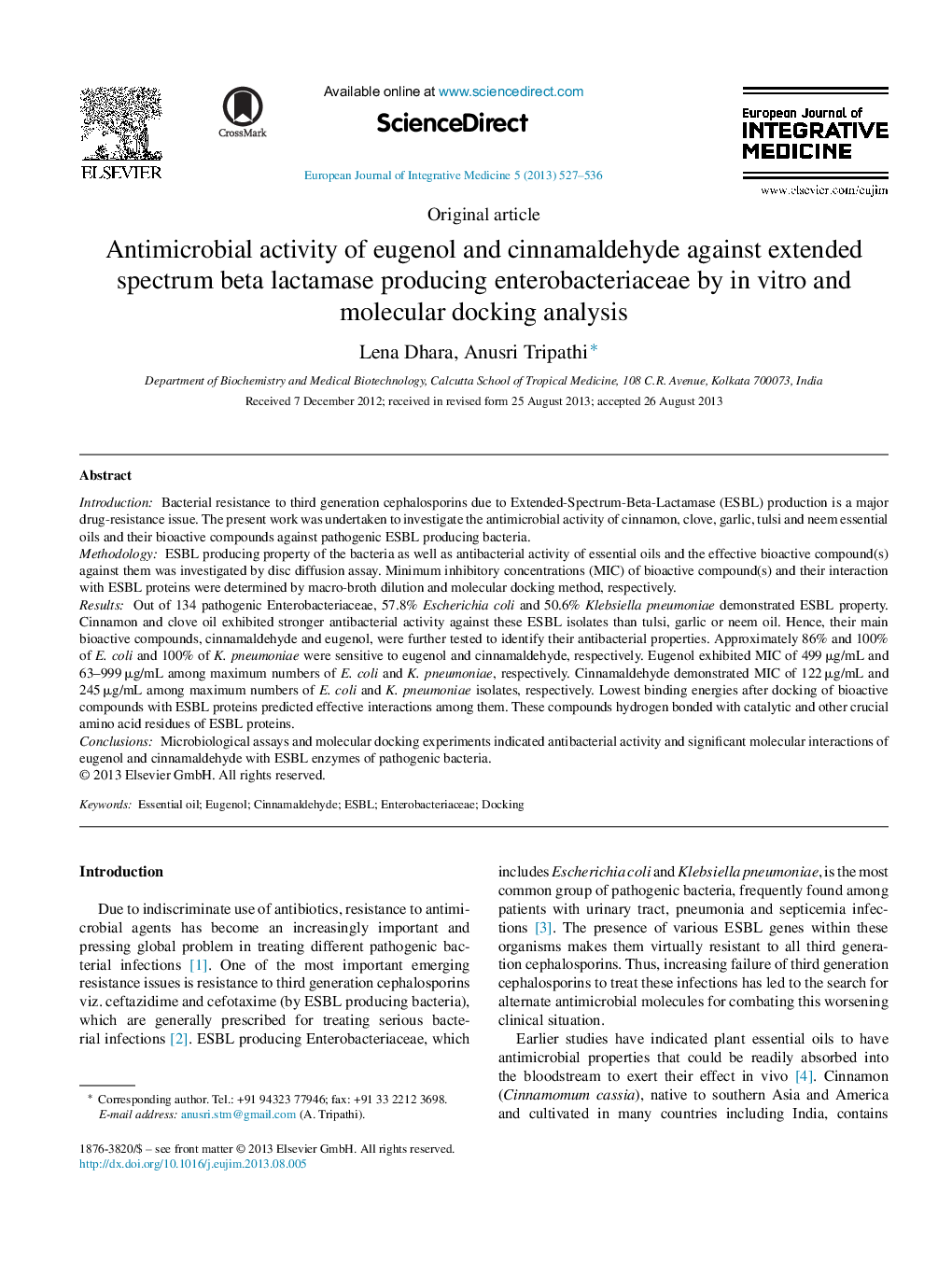| کد مقاله | کد نشریه | سال انتشار | مقاله انگلیسی | نسخه تمام متن |
|---|---|---|---|---|
| 5808014 | 1556066 | 2013 | 10 صفحه PDF | دانلود رایگان |

IntroductionBacterial resistance to third generation cephalosporins due to Extended-Spectrum-Beta-Lactamase (ESBL) production is a major drug-resistance issue. The present work was undertaken to investigate the antimicrobial activity of cinnamon, clove, garlic, tulsi and neem essential oils and their bioactive compounds against pathogenic ESBL producing bacteria.MethodologyESBL producing property of the bacteria as well as antibacterial activity of essential oils and the effective bioactive compound(s) against them was investigated by disc diffusion assay. Minimum inhibitory concentrations (MIC) of bioactive compound(s) and their interaction with ESBL proteins were determined by macro-broth dilution and molecular docking method, respectively.ResultsOut of 134 pathogenic Enterobacteriaceae, 57.8% Escherichia coli and 50.6% Klebsiella pneumoniae demonstrated ESBL property. Cinnamon and clove oil exhibited stronger antibacterial activity against these ESBL isolates than tulsi, garlic or neem oil. Hence, their main bioactive compounds, cinnamaldehyde and eugenol, were further tested to identify their antibacterial properties. Approximately 86% and 100% of E. coli and 100% of K. pneumoniae were sensitive to eugenol and cinnamaldehyde, respectively. Eugenol exhibited MIC of 499 μg/mL and 63-999 μg/mL among maximum numbers of E. coli and K. pneumoniae, respectively. Cinnamaldehyde demonstrated MIC of 122 μg/mL and 245 μg/mL among maximum numbers of E. coli and K. pneumoniae isolates, respectively. Lowest binding energies after docking of bioactive compounds with ESBL proteins predicted effective interactions among them. These compounds hydrogen bonded with catalytic and other crucial amino acid residues of ESBL proteins.ConclusionsMicrobiological assays and molecular docking experiments indicated antibacterial activity and significant molecular interactions of eugenol and cinnamaldehyde with ESBL enzymes of pathogenic bacteria.
Journal: European Journal of Integrative Medicine - Volume 5, Issue 6, December 2013, Pages 527-536